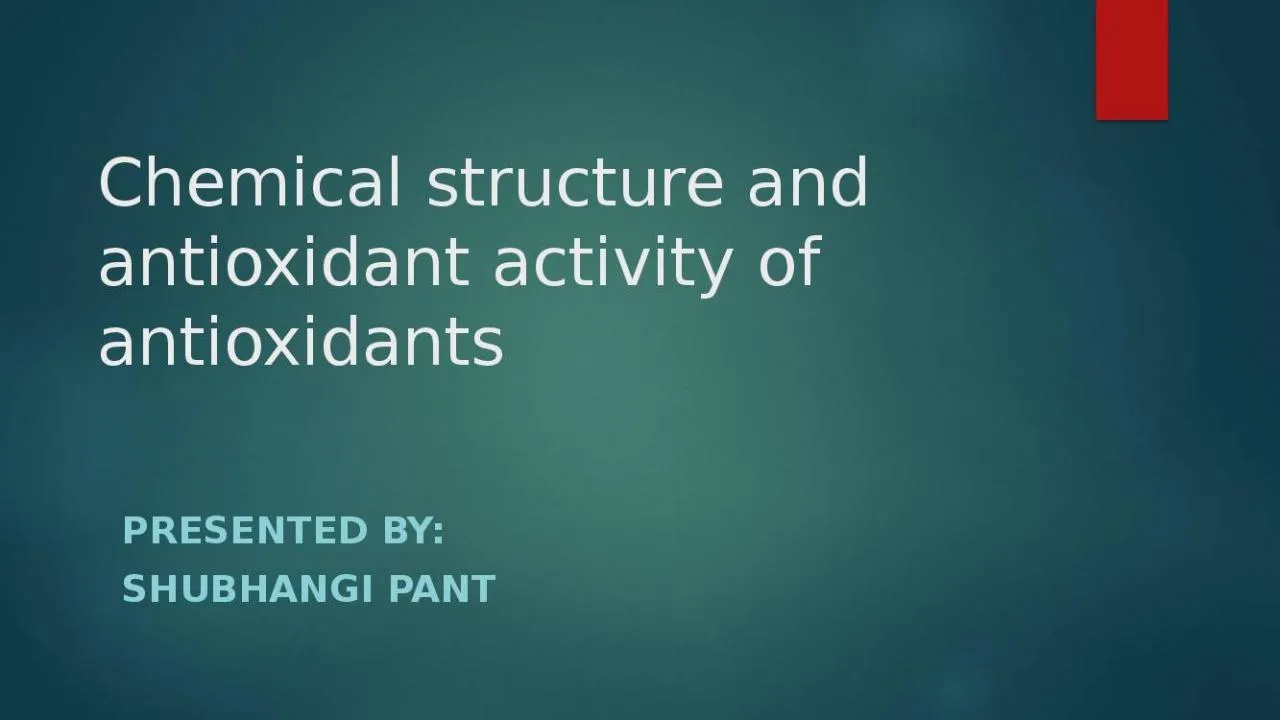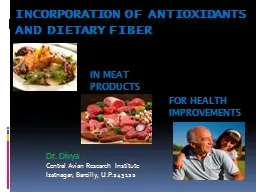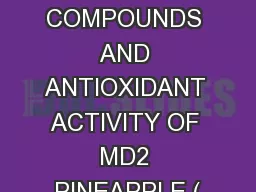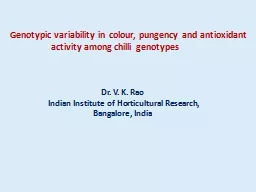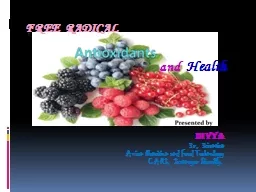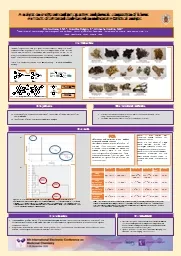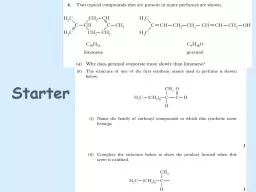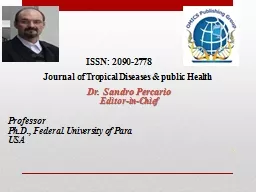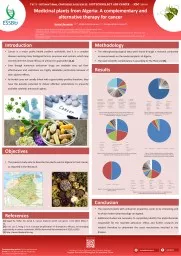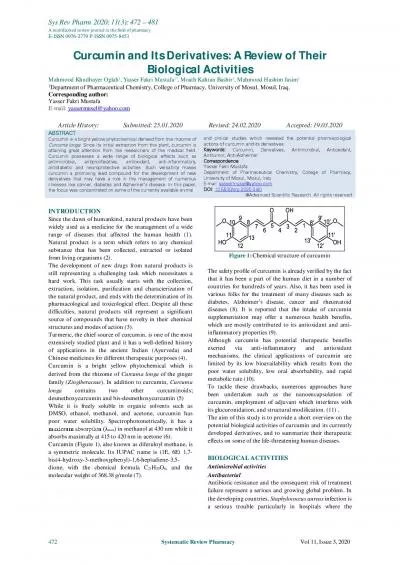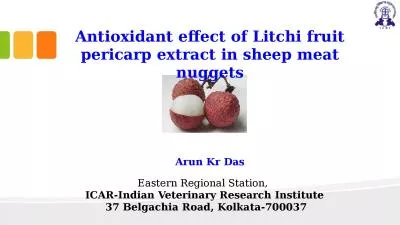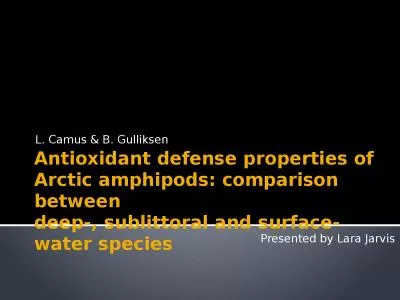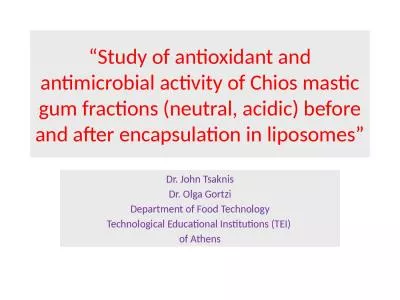PPT-Chemical structure and antioxidant activity of antioxidants
Author : jalin | Published Date : 2022-02-15
Presented by Shubhangi Pant WHAT ARE ANTIOXIDANTS An antioxidant is a molecule that inhibits the oxidation of other molecules Oxidation is a chemical reaction that
Presentation Embed Code
Download Presentation
Download Presentation The PPT/PDF document "Chemical structure and antioxidant activ..." is the property of its rightful owner. Permission is granted to download and print the materials on this website for personal, non-commercial use only, and to display it on your personal computer provided you do not modify the materials and that you retain all copyright notices contained in the materials. By downloading content from our website, you accept the terms of this agreement.
Chemical structure and antioxidant activity of antioxidants: Transcript
Download Rules Of Document
"Chemical structure and antioxidant activity of antioxidants"The content belongs to its owner. You may download and print it for personal use, without modification, and keep all copyright notices. By downloading, you agree to these terms.
Related Documents

